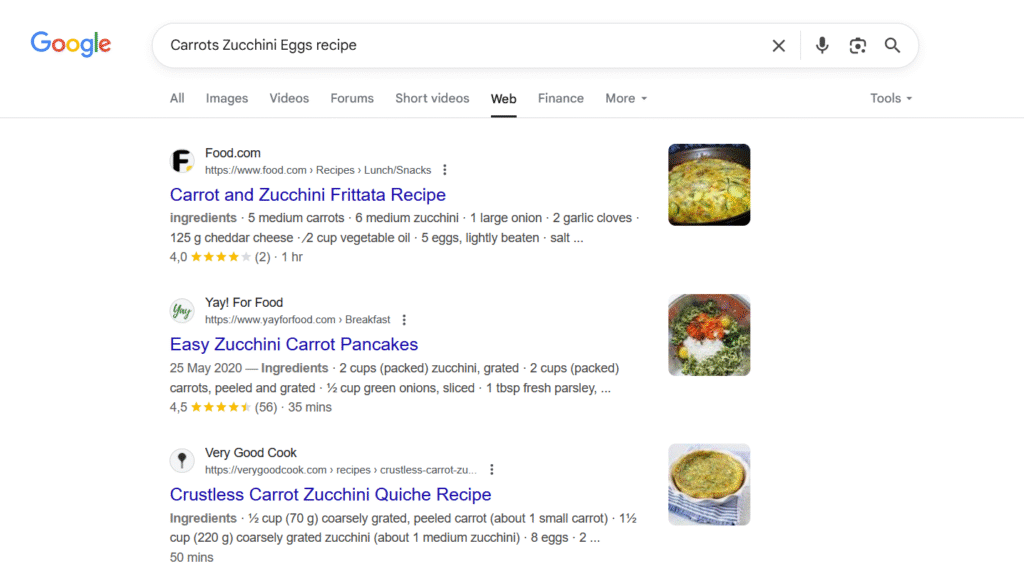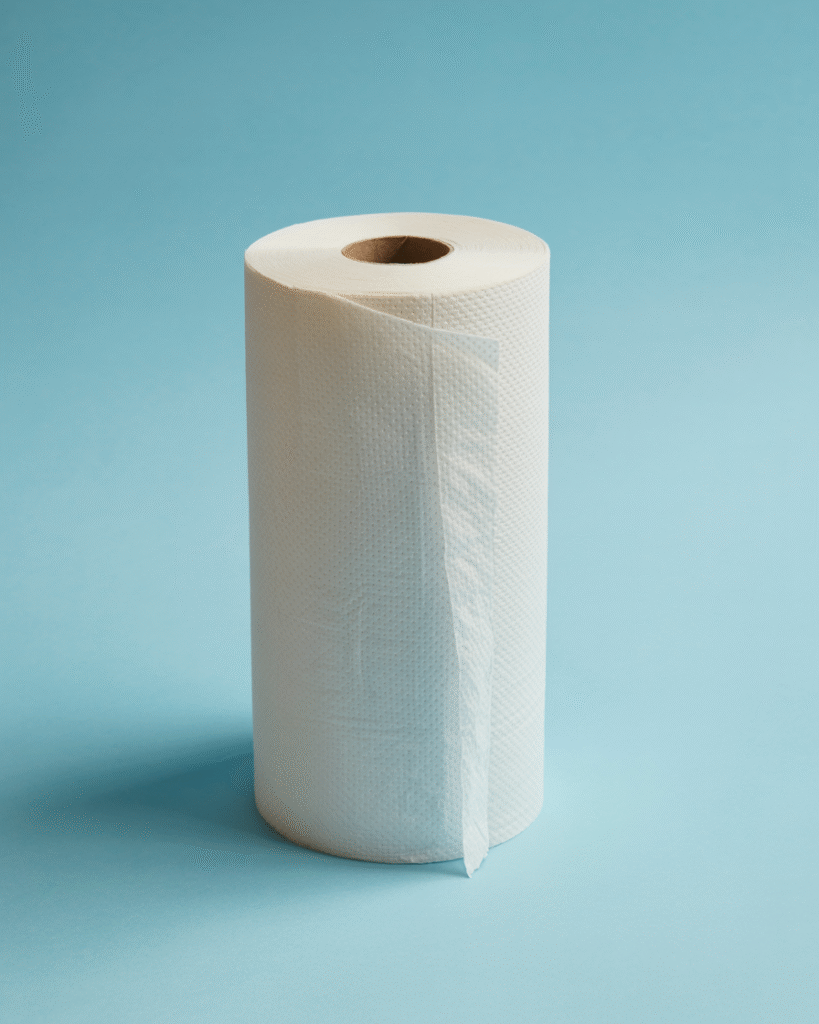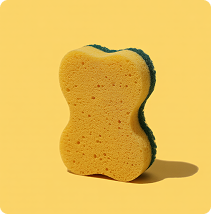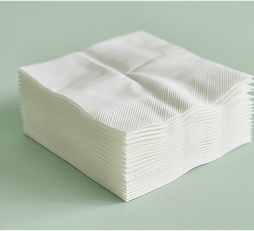Did you know? The average household throws away $1,600 worth of food every year. That’s a vacation, new laptop, or months of groceries literally going in the trash.
But here’s the good news: You don’t need to become a zero-waste guru overnight. Small changes = big impact.
🎯 Quick Wins: Start Today, See Results Tomorrow
These three simple habits require zero special equipment and take under 5 minutes to set up. Pick one, start tonight, and watch your food waste (and grocery bills) drop immediately.
🥡 The “Use It First” Zone (Your Fridge’s VIP Section)
Create a designated spot in your fridge for items about to expire. Front and center. Can’t miss it.
How to set it up:
- Use a clear container or designated shelf at eye level
- Add a “EAT ME FIRST!” label
- Check it before every meal planning
This simple move cuts food waste by 40% for most beginners. One family saved $600 in their first year just from this habit.
📝 The 5-Minute Meal Plan (Shop Your Kitchen First)
Before grocery shopping, spend 5 minutes checking what you already have. Write down 3 meals using those ingredients.
The process:
- Open fridge/pantry
- Spot 3-5 ingredients needing use
- Google “[ingredient 1] + [ingredient 2] recipe”
- Write meal ideas on your phone
For example:

Result: Buy only what you need. Save money. Waste less. Average savings: $30-50 per week.
🧊 Freeze Now, Thank Yourself Later
Master the freeze:
- 🍞 Bread → Slice first, toast straight from frozen
- 🌿 Fresh herbs → Chop, mix with olive oil, freeze in ice cube trays
- 🍌 Overripe bananas → Peel first, break in half, freezer bag
- 🧀 Cheese → Grate first, portion into meal-sized bags
- 🍅 Tomato paste → Freeze tablespoons on parchment, then bag
- 🥛 Milk → Yes, you can freeze it! Shake after thawing
Pro tip: Label everything with date + contents. Your future self will thank you.
🔄 Turn “Trash” Into Treasure
Stop! Before you toss those coffee grounds, eggshells, or veggie scraps, discover how kitchen “waste” can become valuable resources for your home and garden. These aren’t just eco-friendly tips—they’ll save you real money on everything from fertilizer to cleaning products.
🥕 Veggie Scraps = Flavor Bombs (Free Stock in Your Freezer)
Don’t toss:
- Onion ends, skins, and tops
- Carrot peels and tops
- Celery leaves and ends
- Mushroom stems
- Garlic skins
- Herb stems
The system:
- Keep a gallon freezer bag in your freezer
- Add scraps as you cook
- When full, simmer with water for 2 hours
- Strain = 8 cups of rich stock
One bag of scraps = 8 cups of rich, free stock. That’s $12 saved. Do this monthly, save $144/year.
☕ Coffee Grounds: Your Garden’s Best Friend
7 ways to use them:
- Direct fertilizer – Sprinkle around acid-loving plants
- Compost addition – Adds nitrogen (green component)
- Pest deterrent – Circle plants to repel slugs/snails
- Deodorizer – Dry grounds in open container absorb odors
- Cleaning scrub – Natural abrasive for tough pans
- Exfoliant – Mix with coconut oil for body scrub
- Grow mushrooms – Oyster mushrooms love coffee grounds
Storage tip: Spread wet grounds on baking sheet, air dry, store in jar. No mold, ready when needed.
🥚 Eggshells Aren’t Garbage
Prep them right:
- Rinse shells
- Air dry completely
- Crush into powder (food processor works great)
Use them for:
- Garden calcium – 1 tablespoon per plant monthly
- Tomato plant booster – Prevents blossom end rot
- Natural abrasive – Mix with soap for scrubbing
- Pest control – Crushed shells deter slugs and snails
- Seed starters – Half shells = biodegradable pots
- Calcium supplement – For chickens or compost
📦 Smart Storage = Less Waste
The difference between food lasting 3 days vs. 3 weeks? Storage. Master these science-backed storage tricks to double (or triple) your food’s lifespan without fancy equipment—just simple tweaks to how you organize your kitchen.
🍓 The Paper Towel Trick (Double Your Produce Lifespan)
Line produce drawers with paper towels. Change weekly.
Why it works: Absorbs excess moisture that causes rot. Berries last 10 days instead of 3. Lettuce stays crisp for 2 weeks.
Level up: Use cloth towels instead. Wash weekly. Even more eco-friendly.
🥬 Herbs Like Flowers
The method:
- Trim stems at an angle
- Remove lower leaves
- Place in jar with 1″ water
- Cover loosely with plastic bag
- Change water every 3 days
Lifespan boost:
| Herb | Wrong Storage | Proper Storage | Survival Time |
|---|---|---|---|
| Parsley | Plastic bag in fridge | Water + bag method | 3 days → 3 weeks |
| Cilantro | Loose in crisper | Water + bag method | 4 days → 2 weeks |
| Basil | In the fridge | Counter in water | 2 days → 10 days |
| Mint | Wrapped in paper | Water + bag method | 5 days → 3 weeks |
| Dill | Plastic produce bag | Water + bag method | 3 days → 2 weeks |
🍅 Master Your Storage Zones
🌡️ Quick Reference: Where Does It Go?
COUNTER 🏠
Tomatoes • Bananas • Potatoes • Onions • Winter squash • Avocados (until ripe) • BasilFRIDGE ❄️
Leafy greens • Berries • Carrots • Broccoli • Apples • Most herbs • Ripe avocadosSPECIAL RULES ⚠️
• Keep apples away from other produce (releases ripening gas)
• Store potatoes and onions separately (onions cause potatoes to sprout)
• Bananas go solo once ripe (they’re ethylene bombs)
Why this matters: Wrong storage cuts food life in half. Right storage doubles it. That’s literally twice the value from your grocery budget.
🛒 Shop Smarter, Waste Less
Most food waste starts at the store with overbuying and misunderstanding labels. These shopping strategies help you buy exactly what you’ll use, decode confusing date stamps, and save 30-50% on perfectly good “ugly” produce.
📏 The “One Week Rule”
Only buy fresh produce you’ll use within one week. Be realistic.
Planning questions:
- How many meals will I cook this week?
- Any dinner plans or travel?
- What’s already in my freezer?
Exception: Items you’ll definitely freeze or preserve.
🏪 Embrace “Ugly” Produce
Where to find it:
- Imperfect Foods (delivery service)
- Misfits Market (online)
- Local stores’ “ugly” sections
- Farmers markets (end of day deals)
Savings: 30-50% off regular prices. Same nutrition, same taste.
🥫 Decode Date Labels Once and For All
| Label Type | What It Really Means | Your Action | Examples |
|---|---|---|---|
| “Best By” | Peak quality date (NOT safety) | Safe to eat well past date – trust your senses | Crackers, cereal: good for months Pasta: good for years |
| “Use By” | Safety guideline | Follow more closely, but still test | Meat, poultry: follow strictly Dairy: often good 3-7 days past |
| “Sell By” | Store inventory management | Completely ignore – for stores only | Milk: good 5-7 days past Eggs: good 3-5 weeks past |
The golden rule: When in doubt, use the sniff test. Your nose knows better than arbitrary dates for most foods.
🌱 Level Up: When You’re Ready for More
Already mastering the basics? These advanced strategies take your waste reduction to the next level—from apartment-friendly composting to tech tools that automate the process. Each one is optional but can multiply your impact (and savings).
Countertop Composting Made Simple
Options for every space:
- Electric composter ($100-300) – Turns waste to soil in hours
- Bokashi bin ($50) – Ferments all food waste, even meat
- Worm bin ($40) – Quiet, odorless, makes great fertilizer
- Freezer composting (Free) – Collect scraps, drop at farmers market
What to compost:
- ✅ All fruit/veggie scraps
- ✅ Coffee grounds and filters
- ✅ Eggshells
- ✅ Tea bags (remove staples)
- ❌ Meat, dairy (unless using Bokashi)
- ❌ Oils and fats
Turn 30% of kitchen waste into plant food.
🔄 The Sunday Reset Ritual (15 Minutes to Zero Waste Week)
15-minute power session:
- Empty fridge (0-3 min)
- Remove everything
- Wipe shelves
- Audit items (3-8 min)
- Check dates
- Sniff test anything questionable
- Set aside “use immediately” items
- Plan the week (8-12 min)
- List meals using “use first” items
- Note what needs buying
- Prep any vegetables
- Reorganize (12-15 min)
- “Use first” zone front and center
- Group like items
- Update your inventory list
Result: 80% less food waste, clearer meal planning, less midweek stress.
📱 Tech Tools That Actually Help
For food rescue:
- Too Good To Go – Buy surplus restaurant food for 1/3 price
- Olio – Share excess food with neighbors
- Flashfood – Grocery store items near expiration, 50% off
For meal planning:
- Mealime – Creates shopping lists from recipes
- SuperCook – Suggests recipes from what you have
- FoodKeeper – Tells you how long foods really last
For tracking:
- NoWaste – Track what you have, get reminders
- Fridgely – Expiration date tracker with notifications
💡 Your 30-Day Transformation Plan
Ready to put it all together? This week-by-week roadmap takes you from waste-prone to waste-free in just one month. Each week builds on the last, with specific actions and realistic savings targets.
💰 THE MONEY MATH
Without these changes:
Average family food waste = $125/month = $1,500/yearWith these changes:
Month 1 savings: $90-130
Month 2 savings: $100-140 (habits stick)
Month 3+: $120-150/month
Annual savings: $1,080-1,560That’s a vacation. Or 3 car payments. Or a really nice TV. From garbage.
Week 1: Foundation
□ Set up “use first” zone in fridge
□ Start freezer scrap bag for stock
□ Do one 5-minute meal plan before shopping
□ Freeze one thing you’d normally toss
Expected savings: $15-25
Week 2: Storage Systems
□ Implement paper towel trick in produce drawer
□ Store herbs properly in water
□ Reorganize fridge by storage zones
□ Start saving coffee grounds
Expected savings: $20-30
Week 3: Shopping Shifts
□ Shop with one-week rule
□ Try one “ugly” produce item
□ Buy one less impulse item
□ Check dates properly before tossing
Expected savings: $25-35
Week 4: Level Up
□ Make first batch of veggie stock
□ Do your first Sunday Reset
□ Download one helpful app
□ Start simple composting
Expected savings: $30-40
Total first month savings: $90-130
Projected annual savings: $1,080-1,560
🎉 The Real Impact
Your personal wins:
- 💰 Save $1,000-1,500 annually (proven average)
- ⏰ Spend 2 hours less per week on grocery runs
- 🧘 Reduce meal-planning stress by 75%
- 💪 Eat healthier (using what you have = more home cooking)
Your environmental impact:
- 🌍 Reduce carbon footprint by 8%
- 💧 Save 25,000 gallons of water annually
- 🚛 Reduce methane emissions (food waste in landfills)
- 🌱 Support sustainable food systems
The mindset shift: Stop thinking “waste reduction” → Start thinking “resource maximization”
You already bought it. You already have it. Now use it brilliantly.
🚀 Start Here, Right Now
Your first three actions:
- Go to your fridge – Find one thing about to expire
- Use it today – In any meal, any way
- Feel the win – You just saved money and helped the planet
Remember: Every saved strawberry, every frozen banana, every veggie scrap in stock is a victory. Perfect is not the goal. Progress is.
Ready to transform your kitchen habits? Pick one section above and master it this week. Next week, add another. In 30 days, you’ll be amazed at the change.
The best time to start was yesterday. The second best time is now. 🌟



